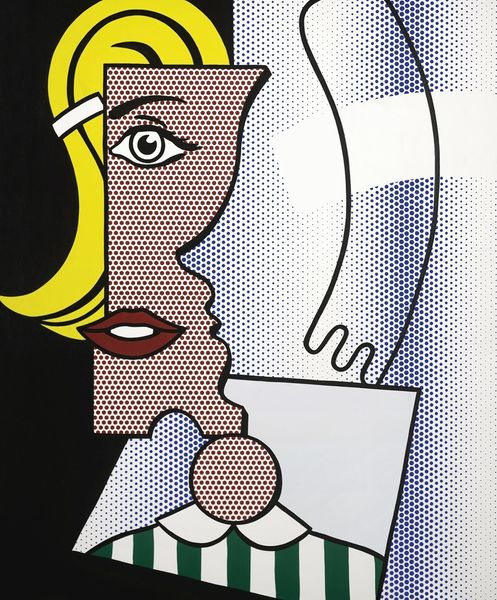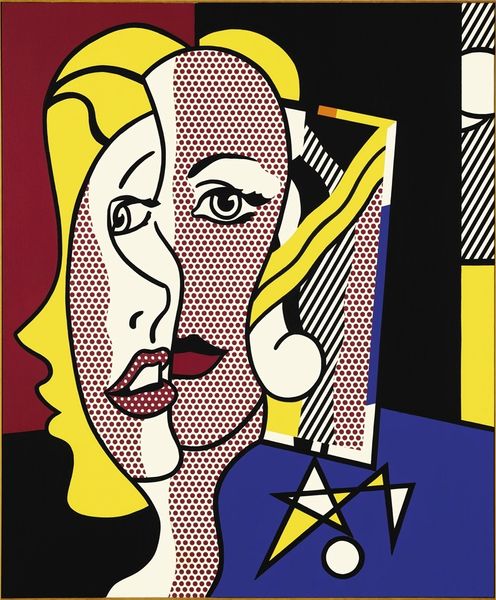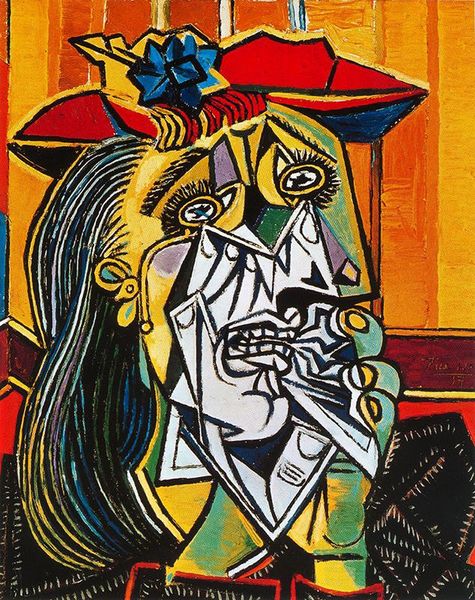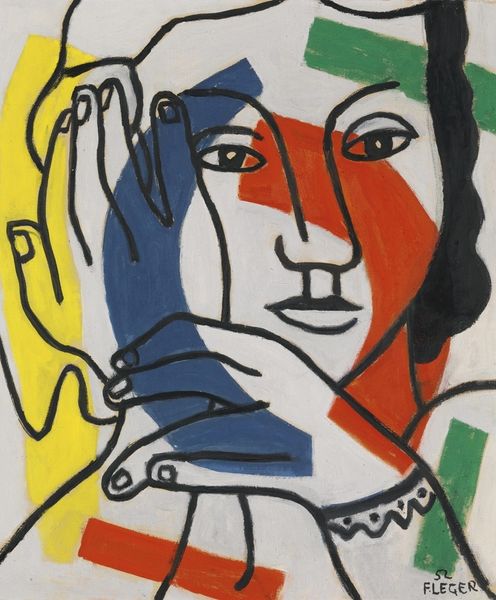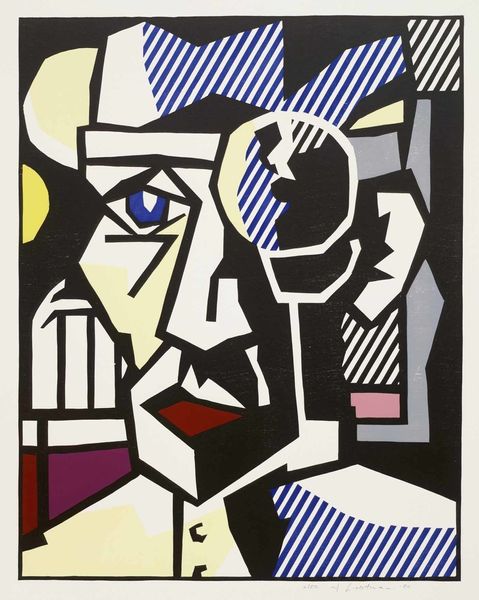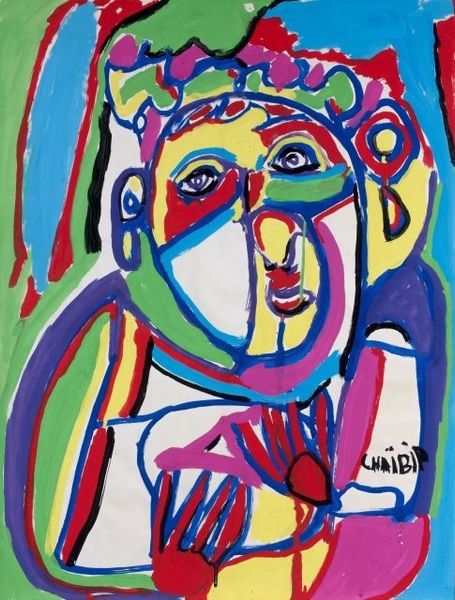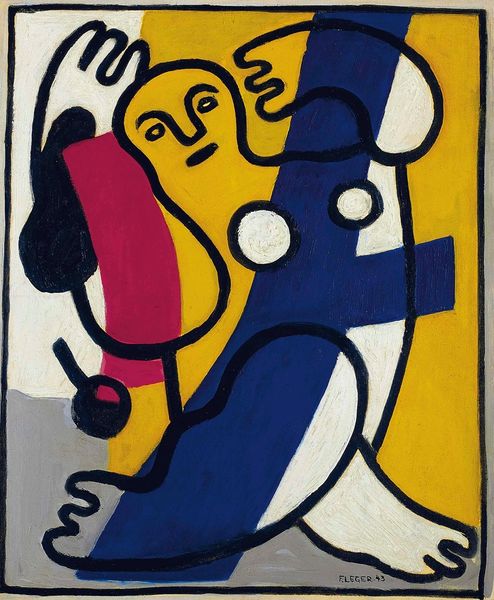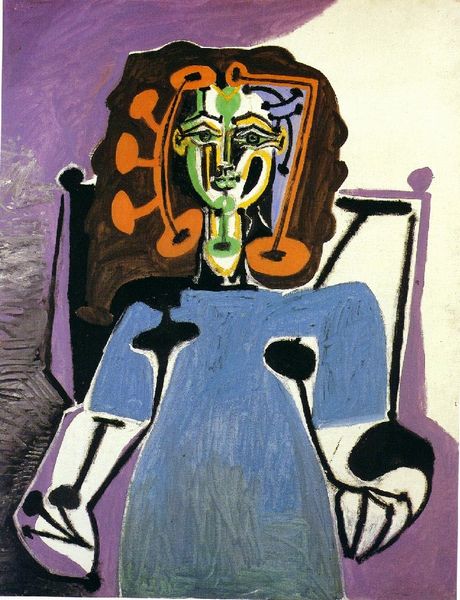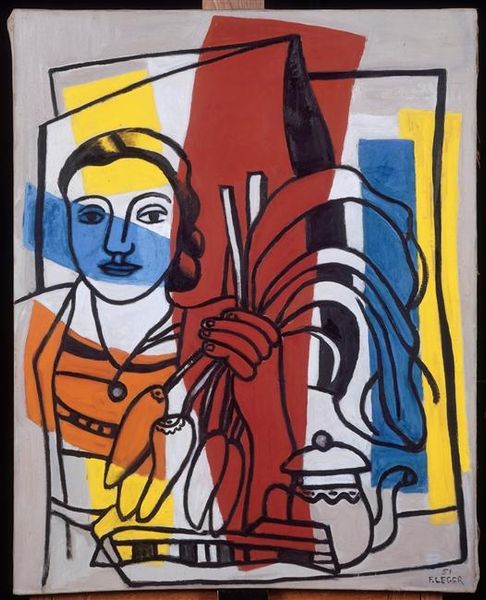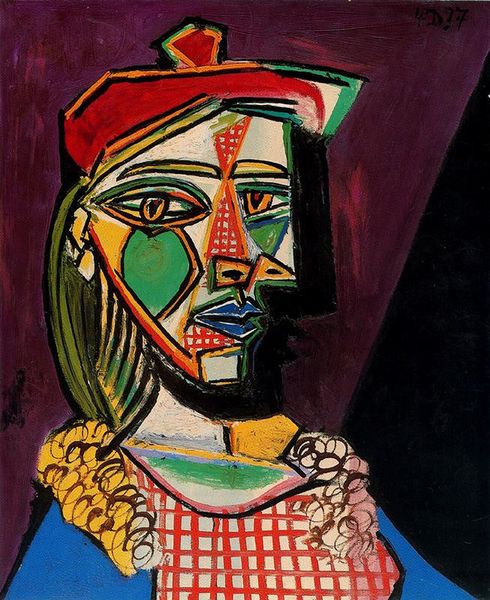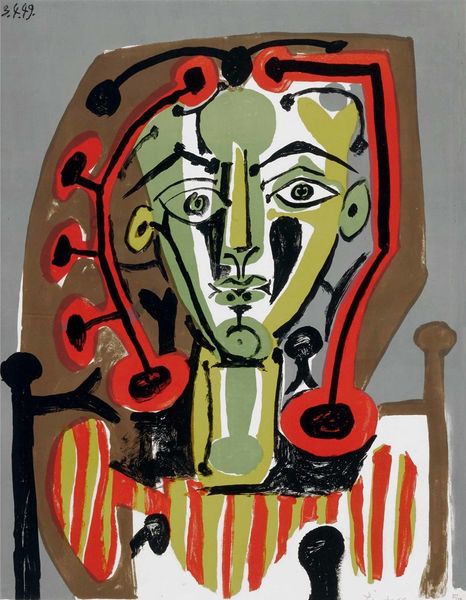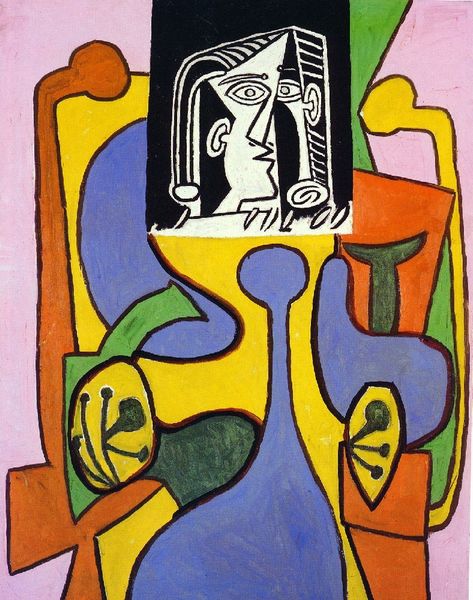
collage, acrylic-paint
#
portrait
#
popart
#
collage
#
pop art
#
acrylic-paint
#
figuration
#
geometric
#
pop-art
#
modernism
Copyright: Roy Lichtenstein,Fair Use
Curator: Let's take a closer look at Roy Lichtenstein's "Woman with Flowered Hat" from 1963, realized with acrylic paint and collage. Editor: My initial impression is one of fractured elegance, like looking at a familiar image through a shattered mirror. The vibrant colors clash in a way that feels both jarring and deliberately stylish. Curator: The collision you’re experiencing is likely intentional. Lichtenstein’s known for appropriating and recontextualizing imagery from popular culture and high art. Here, he engages with Picasso, translating the Cubist master's style into his signature Ben-Day dots and bold outlines. We see how he processes and reproduces a modern style using contemporary, commercial methods. Editor: Ah, I see that now. The way he flattens the figure and uses those simplified forms creates a fascinating tension. The dots remind me of halftone printing, giving it that mass-produced, comic book feel, almost as though this is some ironic deconstruction of femininity. The hat with the flowers, for instance, strikes me as less decorative and more symbolic of contrived beauty standards, but distorted through the language of industrial art. Curator: Indeed, this is an exploration of the means of production, where mechanical reproduction meets subjective representation. The use of acrylic, itself a relatively new material in art at the time, is not accidental. Lichtenstein is very intentionally placing “high” and “low” art in direct conversation via materials and processes. The Ben-Day dots, so integral to his technique, were usually applied with stencils, introducing a further mechanical element to the act of creation. Editor: Absolutely, the Ben-Day dots become a symbol in themselves. And in this context, it signifies both commercial art and this flattening, this industrial lens through which we're seeing beauty represented. I notice also that the woman seems both composed and disjointed. Are we meant to read something about female identity during the period, trapped, maybe fragmented by those prescribed gender roles of society? Curator: Interesting question. The work seems to suggest something of that order. Looking at the wider body of Lichtenstein’s work, his focus was more on the way we consume and process images themselves, how they are manufactured and circulated, but certainly the symbolism you identified contributes an undeniable layer to how we may see the subject within that construct. Editor: It certainly gives one much to think about in terms of material, form and visual meaning in Pop art. Curator: A testament to how artistic processes can be more meaningful. Thank you.
Comments
No comments
Be the first to comment and join the conversation on the ultimate creative platform.
